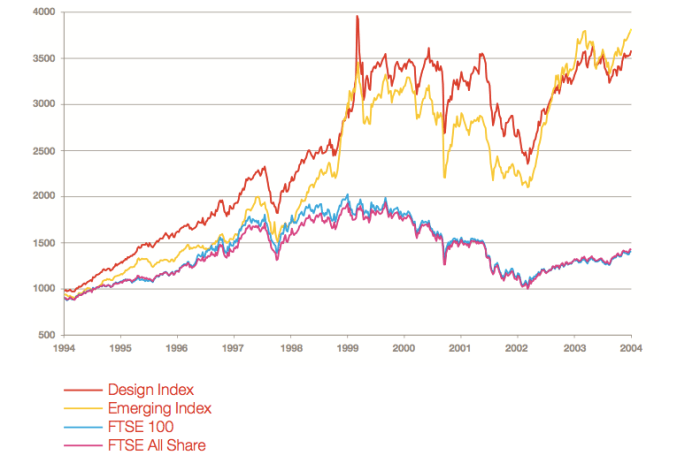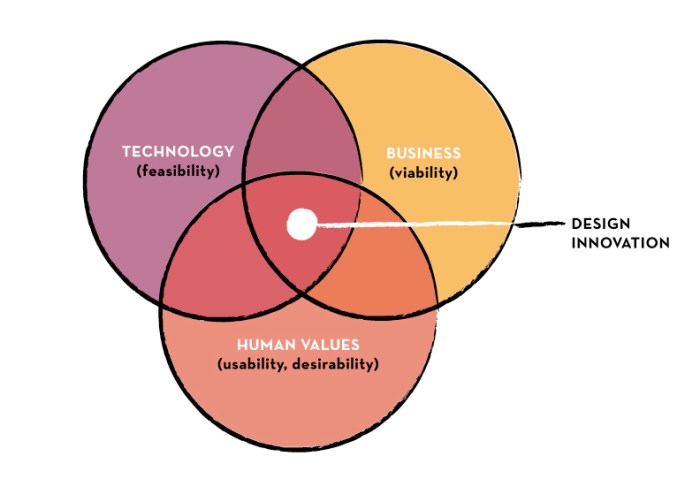Design thinking pays off! The British Design Council has issued a study which tracks the performance of companies they consider to belong to the Design Index (longterm application of design principles in product and organizational development on a systemic basis) and Emerging Index (newcomers who partially or a have recently adopted design principles to their products and business). In all, companies which can be labelled in either category seem to be outperforming their competitors, even in the long run. Have a look:
 This is a very promising trend. It shows that businesses overly focussing on engineering and technology as drivers for business development will eventually lag in performance. Rather, business that is able to integrate design thinking into operations, using design as a method to guide business strategy, and to shape product, service and process development, ends up discovering new business drivers through superior command of user and market requirements.
This is a very promising trend. It shows that businesses overly focussing on engineering and technology as drivers for business development will eventually lag in performance. Rather, business that is able to integrate design thinking into operations, using design as a method to guide business strategy, and to shape product, service and process development, ends up discovering new business drivers through superior command of user and market requirements.
This is pretty convincing, but the question is: how does one start thinking about design in business? Stanford Design School provides the scoop:
The figure nicely captures the ” how” using the Venn Diagram principle showing where the design innovation sweet spot is most likely to be found: the place where technological solutions are tailored to society’s wants and needs, and the effect of which is perpetuated through the specialized execution of business. For purposes of illustrating in more detail how design and organization come together, the Design Council has also written up several cases that apply principles of design thinking to their organization.
OK, so now we know the “how” we need to think, what is it we need to do in order to work along the line of business design? A very comprehensive solution is provided by Alexander Osterwalder‘s Business Model Canvas, inventor of the idea that the anatomy of any business reveals a parsimonious constellation of 9 distinct building blocks. Check ’em out:
The canvas operationalizes the argument that you need to take a step back from focus on the product or service and look at the business system to strengthen market viability. Instantly with the canvas, the business designer is required to look at the bigger picture of what activity system the business needs to develop in order to strengthen any product of service’s chances of market uptake.
My personal experience is that the more options are worked out for a single business idea using the canvas, the more discoveries you can make that link the various building blocks together and turn out a smooth business logic flow. In the coming days I will show how this works with a revamp of the “Osterwalder classic” on Nespresso with some insights on the value chain dynamics this model is generating, and the impact it has on sustainability [Post-publication edit: You can find the case here]. By continuously studying and developing business models with the canvas, it reveals harmony in building blocks, aesthetics, and functionality: the promise of a really well designed business idea. Get cracking with yours! It’s worth it!


2 thoughts on “Design and Firm Performance”